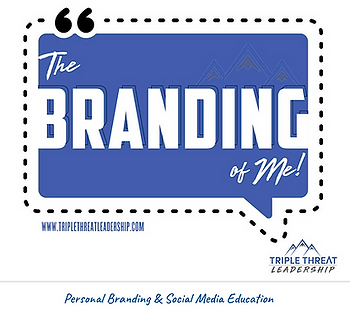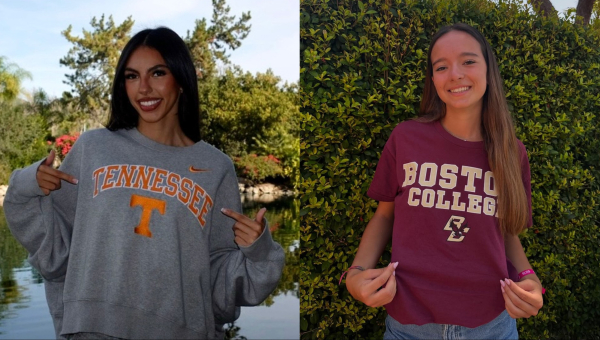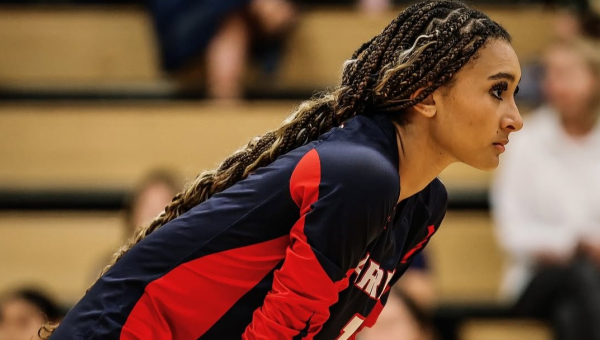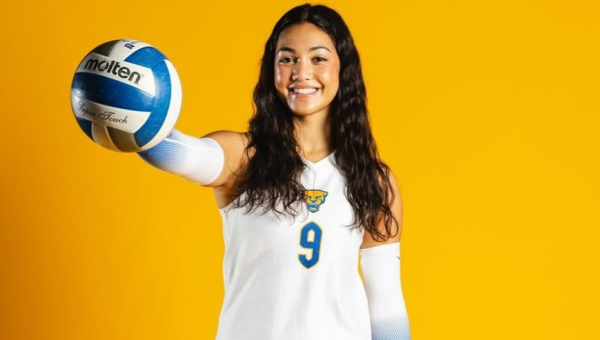
This content is provided FREE through our partnership with Dr. Scott Grant and Triple Threat Leadership/NIL Education to bring your family resources to learn the ins and outs about NIL, including the rules (each state is different), tactics, pitfalls, and marketplaces to take advantage of exciting opportunities available to student athletes.
Doc's Dose has been on a little bit of a hiatus recently due to an influx of opportunities to serve state AD associations, schools, AD's, coaches, staff, and students that to be honest, I just wasn't able to fully sit down and get writing!
But all great things, and as always, I feel so blessed for the chance to work with high schools throughout the country that are doing their best to "Lead in this New Normal of NIL."
It's a lot to understand, and as if their jobs aren't already hard enough, the expectations placed on them to figure out how to lead their schools through this while also maintain compliance is truly a massive undertaking.
With that being said, I recently was asked a question by a School Superintendent in a state whose athletic association just approved to permit NIL activity for their student-athletes, and I felt like was something many school administrators are wrangling with in their heads...
After a long back and forth call, he goes,
"Scott, so what is our role? What do we need to be doing? What do we need to be thinking about? Where do we start with all of this and how do we do it?"
Excellent question, and honestly, the right way to truly approach it (IMO).
1. Education and Guidance:
I repeatedly tell school administrators that when you look at almost every High School State Athletic Association Policy, it really only allows schools to do one thing...
Build an Educational Plan to support their district.
I'm a firm believer that people are going to get their information about NIL from somewhere, and let's be honest, with the mass influx of people who are now "NIL Educators" and the plethora of "NIL Experts" who often don't have high school stakeholders best interest in mind or understand high school state regulations and day to day operation of high schools, coupled with the the amount of disinformation being provided and the 2% of glamorous NIL deals witnessed through the media, the issue of where to start with proper education can be somewhat traumatizing.
I also believe high school athletic departments and their respective school districts must play a crucial, necessary role in educating their staff, student-athletes & families, as well as business community properly about Name, Image, & Likeness to ensure everyone is clear and hearing the same message regarding what NIL is, the rules surrounding it (specifically in regards to their state high school association policy), and the potential consequences and impact of violating those rules.
I get calls repeatedly from businesses and families who stated, "we are interested in pursuing an NIL opportunity with x company, or with x student" or even "I have an NIL opportunity presented and we're trying to figure out what to do".
My first question is always, "what state do you live in?"
You'd be amazed at how many of these high school student-athletes or business are located in states whose state athletic association does not yet permit NIL activity, and when I tell them that, the response more often than not is...
Really? We thought it was allowed everywhere!
Additionally, student-athletes AND their families who are interested in pursuing NIL activity must understand the different types of NIL opportunities available, as well as how to APPROPRIATELY navigate these opportunities ethically and professionally.
While most athletic departments internally don't have the knowledge to do all of this education, it's important that it "comes" from them in some manner. I'm a firm believer that just shipping it off to a 3rd party that their state association hired without any care or concern for the specific district's needs, as well as community uniqueness is a recipe for disaster.
For example - I've had hundreds of AD's ask me for a condensed "informational packet" to send to their staff as well as their student-athletes / families.
Because of that our "NIL Prep Kit" was born and is included with either PrepVolleyball NIL Package. This resource is a game changer for school administrators / ad's, as it's the #1 resource developed that provides a condensed, all in one place culmination of major NTK's (need to know's).

You can learn more about that here.
But even more than that, this is a resource that was built specifically from feedback from schools / administrators / and people wanting to know more about NIL in a very easy to digest format.
It includes key things that school administrators need to know, as well as want their stakeholders to understand such as:
- NIL Informational Overview
- NIL Key Red Flags
- Top 10 - NIL FAQ's & NTK's
- School District Key Questions / Focus Guide
- Sample High School NIL Policy
- Sample NIL Compliance Reporting Document
- School District Next Steps Guide
- NIL Tips for HS Athletic Directors
- LifeBrand Social Media Cleaning Tool - Discount Link
- Condensed NIL Prep Kit for Student-Athletes / Parents
High School Athletic departments are part of an educational based system, and educational based athletics has a tremendous opportunity to help clarify a very misunderstood environment, and one which may impact their student athletes (currently, and in the future).
And if you want to know what other schools are doing, there is one that I've worked with for over a year in a state that DOES NOT allow NIL and they're going all in on building an educational plan that truly blesses their constituents within the confines of their state's policy.
They're building:
- a NIL Coordinator position internal within their school (the 1st in the country at the HS level)
- a NIL educational applications developed in conjunction with their Entrepreneurship Academy
- Continued compliance and educational support for opportunity preparation that encompasses the student-athletes, parents, and business community
Some might say this isn't right, but they see what's coming, and they are taking an EDUCATORS approach, with the full support of their school administration.
They're not willing to let someone external control the narrative and education that they see as valuable for their stakeholders.
2. Compliance:
Because almost all policies at the high school level are written with infractions that are focused on the student-athlete losing their amateurism status or eligibility to participate in sports at their respective high school, it's imperative that High school athletic departments and their staff members ensure that their student-athletes comply with state and local NIL regulations and guidelines, as well as any policies set forth by the school or athletic association.
How does that happen?
To be honest, only with proper education. And that also includes proper education and clarification for the school administrators of what exactly they're being asked to do within the state policy, what violations look like, whether it is self-reporting or investigation from the state association, or how the infraction reporting system works.
If state athletic associations aren't prepared to educate on this, or manage this process, then I'll be the first to say they probably shouldn't have approved the allowance for NIL activity. It's their policy, and they must ensure that they are providing the schools with the appropriate understanding of what this means in APPLICATION!
Additionally, the rules surrounding NIL can be complex, and there are potential legal and financial consequences for non-compliance, so it is essential that athletic departments stay up-to-date on the latest developments and communicate any changes to their student-athletes, BUT, that support must come from the State Athletic Associations in some manner.
3. Extended NIL Support:
Now some people when they see that might say, "but that's not a school's job", and I get it... I honestly do, and I'll back high schools forever!
But - there will be student-athletes that want to venture down this pathway, and like I said earlier, they're going to get their "information" from somewhere, so creating some type of streamlined approach of resources for student-athletes and their families who choose to pursue NIL opportunities is necessary.
Whether that's a directory of local entities who are available to support them (at their cost), such as legal and financial professionals who can provide guidance on contracts and taxes. Not saying schools have to do this, but, while a great complement for their business courses, having some type of additional community engagement to support them seems like a win-win for everyone involved.
Additionally, as I focus on in all my presentations, the life skill development opportunities that are present for ALL students because of NIL are incredible...
- Social Media & Personal Branding - (one of my passion areas, and the reason why I built The Branding of ME Course! (included in the NIL Branding Package)
- Entrepreneurship
- Financial Literacy
- Marketing
- Communication

Schools are already teaching these elements within their curriculum, but now there is an opportunity to craft some additional extended support focused on these life skills and their relation to NIL activity.
As a former sociology and business teacher, I think about the mass amount of projects I could have done within my courses due to the continued growth of NIL activity. And even if a kid doesn't monetize their NIL, or have any interest in pursuing that avenue, the aspects they could learn would be beneficial for any future endeavor they choose.
4. Equity:
Now this can get a little tricky as the regulations at the high school level are a bit different than college, and we haven't seen a mass influx of collective development in the HS space (but I think we will, especially in some areas).
And it's important to understand that NIL Collectives are external the school, so they don't fall under the equity regulations in regards to Title IX compliance, BUT, if schools are building educational planning and services internally, it's important to note that at the high school level they need to consider how they are ensuring this is for ALL of their students, student-athletes, teams, etc.
It's not just about helping the elite football player, or the state ranked basketball team, but rather, building a comprehensive NIL educational plan and program that services all of their students with life skills that truly will aid them moving forward, no matter what path they choose to go down.
Ultimately, the permittance of NIL at the high school level has opened up a new world of opportunities for student-athletes and their families, but it also presents new challenges for high schools and their athletic departments.
By educating, guiding, complying, supporting, and promoting equity in NIL educational opportunities, athletic departments can help all of their stakeholders navigate this new landscape successfully.




